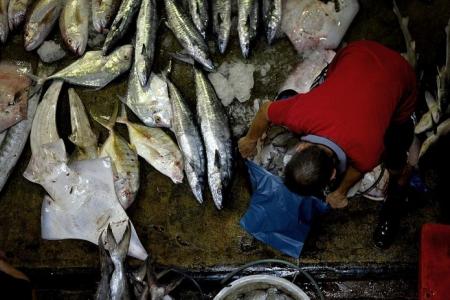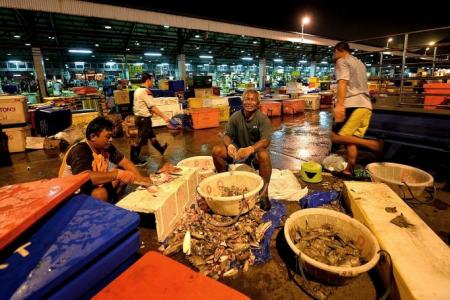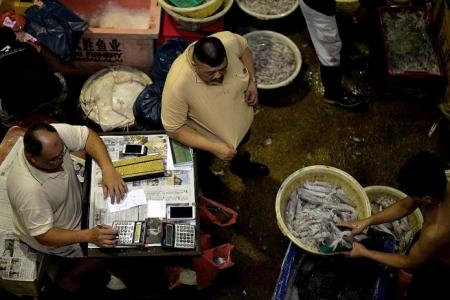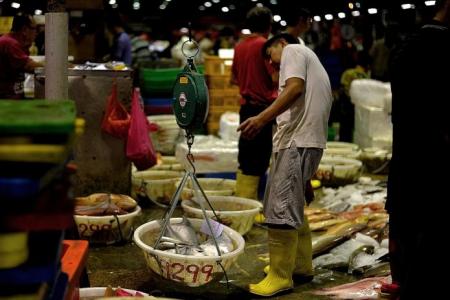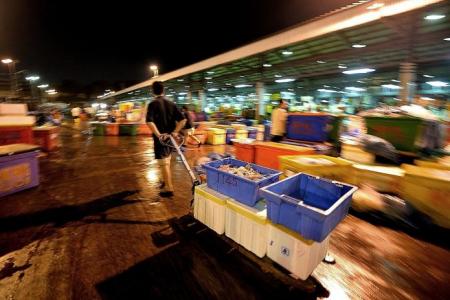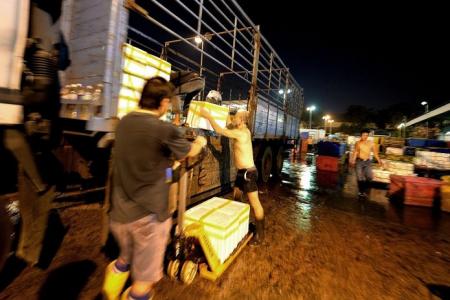Jurong Fishery Port to undergo redevelopment
Jurong Fishery Port to go through overhaul, possibly become tourist spot
Tucked away in a small corner of the island, Jurong Fishery Port is all hustle and bustle when most of Singapore is still fast asleep.
The fishery port started operations in 1969, integrating a port for fishing vessels to dock, a 400m-long wharf and a 9,000sq m wholesale fish market. It is where most of the seafood found in wet markets or supermarkets are from.
A cacophony of sounds greets visitors in the wee hours - fishermen noisily dropping off their catches and fishmongers announcing loudly the variety of seafood available at their stations.
Then-Minister for National Development Khaw Boon Wan announced last year that the fishery port will be upgraded.
A spokesman for the Agri-Food & Veterinary Authority of Singapore, which operates both the Jurong and Senoko fishery ports, told The Straits Times that redevelopment for the former is on its way.
One idea is for the fishery port to become an attraction, like Fisherman's Wharf in San Francisco or the Tsukiji Market in Tokyo.
The New Paper on Sunday (TNPS) visited the fishery port last Thursday and talked to the people at work.
THE FISHMONGER
Mr Lim Pong Hooi, 50, has been running around the fishery port since he was 29 years old.
TNPS visited him at 2am, only for the man to share that it was the busiest time of the "day" and that the hubbub would die down only when the day breaks.
His company, Ee Heng Chop, has been in the trade for over 40 years. It sells up to 4.5 tonnes of fish daily, with the bulk going to wet markets and supermarkets.
The air is thick with the smell of the sea, but it is something Mr Lim has got used to.
At the fishery port, many men work without shirts, perhaps to save their clothes from the briny fumes.
Mr Lim says: "We're rough people here, because we want to get stuff done fast."
THE CUSTOMER
Smart locals skip sleep and head to the fishery port for bargains.
Mr Amir Mohd Ariff, 49, is one of them.
"The seafood here is fresher and cheaper, sometimes up to $4 cheaper as compared to the heartland wet markets," says the technician, while showing off his loot.
His favourite are the sea prawns, as he claims most of the prawns sold at other places are of the farmed variety.
When asked if he would be happy to share his secret spot with other locals and tourists, he says: "It'll be sad as the raw feeling of this place would be gone."
THE FISHERMEN
While taking a breather from the main market, this journalist spotted a group of men cutting up fish.
When asked if it was for the shops, they reply that it is the lot that did not manage to get sold.
As fishermen, they leave nearby Batam, Indonesia, at around 9pm with the day's catch of about 15 to 20 tonnes of seafood, ranging from fishes to crustaceans, in a 10m-long vessel.
Before returning to Batam at around 7am, some of them will scale and prepare the unsold fish to be taken home.
When told about the talks of upgrading the fishery port to an upmarket spot, the first thing one of them asks is whether they will still be allowed in.
Get The New Paper on your phone with the free TNP app. Download from the Apple App Store or Google Play Store now

